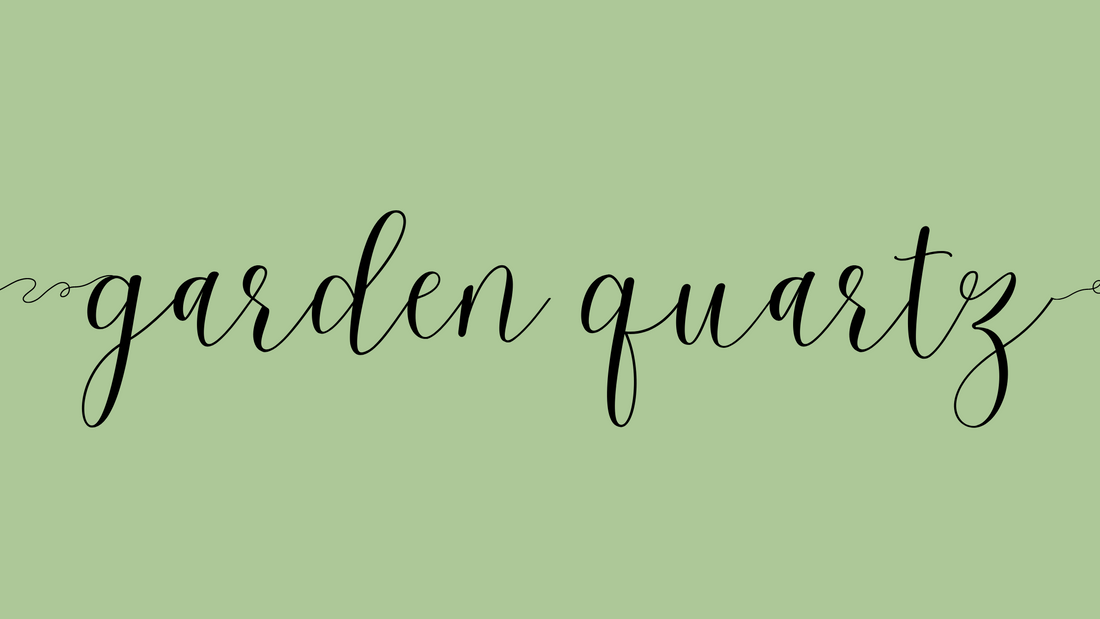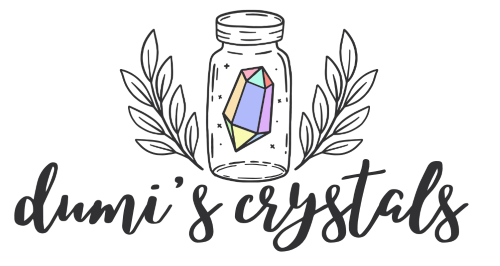
Garden Quartz: Unveiling the Enchanting World of Landscape Crystals
alisa dumitrescuShare
Discover the Magic of Garden Quartz: Nature's Miniature Art
Imagine holding a tiny world within your hand – a crystal containing vibrant, static scenes like mossy forests, underwater vistas, or abstract swirls of earthy tones. This is the captivating beauty of Garden Quartz, also known as Lodolite or Landscape Quartz. This exceptional member of the quartz family stands out for its breathtaking internal landscapes, making it a prized possession for crystal collectors and anyone who appreciates natural artistry.
While other quartz varieties are valued for their clarity or specific inclusions, Garden Quartz captivates with its unique inner worlds. In this guide, we'll delve into what makes Garden Quartz so special, comparing it to other quartz types to highlight its enchanting appeal and help you understand why it's such a fascinating crystal.
Garden Quartz vs. Clear Quartz: Clarity vs. Inclusions
Clear Quartz, often called the "master healer," is celebrated for its remarkable purity and transparency. Its ability to amplify energy and intentions makes it a versatile tool in spiritual and healing practices. Its pristine appearance symbolizes clarity and focus.
However, Garden Quartz embraces inclusions rather than the absence of them. Its magic lies in the fascinating array of minerals trapped inside during formation. Imagine seeing delicate formations of green chlorite (resembling moss), earthy red or brown hematite, creamy white feldspar, or shimmering mica flakes within the crystal.
This is where Garden Quartz earns its evocative names. These internal inclusions often create breathtaking miniature landscapes – tiny forests, serene underwater scenes with algae-like formations, or abstract paintings of colour. The beauty of Garden Quartz isn't in flawless transparency but in the unique "garden-like" appearance within, offering a tangible connection to Earth's artistry.

Witness the captivating contrast: while Clear Quartz shines with pristine transparency, Garden Quartz embraces a vibrant inner world.
Key Differences: Clear Quartz is valued for its purity and transparency, while Garden Quartz is prized for its diverse and scenic internal inclusions.
Garden Quartz vs. Smoky Quartz: Colour vs. Internal Scenes
Smoky Quartz is known for its beautiful grey or brown tint, ranging from a subtle haze to a deep, grounding dark brown (sometimes almost black). This smoky hue results from natural irradiation and trace amounts of aluminium, giving it an earthy and protective energy.
While some Garden Quartz pieces might have a subtle smoky undertone, its defining characteristic is a generally clear base that acts as a perfect canvas for its distinct and often colourful inclusions. Unlike the consistent coloration of Smoky Quartz, Garden Quartz boasts a vibrant internal world filled with various minerals.

Observe the intricate mineral inclusions within this Garden Quartz tower, a vibrant contrast to the uniform smoky coloration of Smoky Quartz.
Key Differences: Smoky Quartz enchants with its overall grounding colour, while Garden Quartz captivates with the intricate and diverse "garden" it holds within its clear form. Think of Smoky Quartz as a consistent landscape and Garden Quartz as a collection of unique miniature ecosystems inside.
Garden Quartz vs. Rutilated and Tourmalinated Quartz: Variety vs. Specific Inclusions
Rutilated Quartz is easily identified by its striking needle-like inclusions of rutile, often golden but also reddish-brown, copper, or silvery. These look like shimmering threads or tiny lightning bolts running through the clear quartz, creating a dynamic effect.
Tourmalinated Quartz features black tourmaline needles embedded within the clear quartz, appearing as stark, dark lines or slender rods, sometimes forming dense clusters. This creates a bold and grounding aesthetic.
While both Rutilated and Tourmalinated Quartz showcase beautiful inclusions, Garden Quartz typically offers a much broader and more varied spectrum. Their inclusions are specific (rutile or black tourmaline), whereas Garden Quartz can host diverse minerals like chlorite, hematite, feldspar, and mica, leading to picturesque, scenic effects.

This Garden Quartz tower showcases a captivating blend of chlorite, hematite, and other minerals, offering a richer internal landscape than the focused inclusions of Rutilated or Tourmalinated Quartz.
Key Differences: Rutilated and Tourmalinated Quartz feature specific, defined inclusions, while Garden Quartz presents a more complex and varied miniature ecosystem within.
The Unique Appeal of Garden Quartz: Individuality and Connection to Nature
The true magic of Garden Quartz lies in its captivating inner worlds. Unlike crystals chosen for consistent colour or specific inclusions, Garden Quartz draws us in with its unpredictable and unique internal landscapes. Each crystal is a miniature universe, a snapshot of geological processes frozen in time, offering a glimpse into Earth's artistry on a tiny scale.
Its inherent one-of-a-kind nature is a significant aspect of its appeal. Just as no two snowflakes are alike, no two pieces of Garden Quartz will ever be identical. The specific minerals, their colours, arrangement, and the overall "scene" will vary infinitely. Owning a piece of Garden Quartz means possessing a truly unique natural masterpiece.
This individuality makes Garden Quartz a prized addition to any crystal collection, a talking point, and a source of endless fascination. Its breathtaking beauty and the guarantee of owning a truly unique treasure make it a standout piece that sparks conversation and admiration. Each crystal tells its own story, inviting you to explore the tiny world held within its depths.

Observe the captivating mineral inclusions that give garden quartz its unique "landscape" appearance.
Conclusion: Embrace the Enchanting World Within
In conclusion, while the quartz family boasts many beautiful crystals, Garden Quartz (Lodolite/Landscape Quartz) truly stands out with its captivating internal landscapes. Unlike the clarity of Clear Quartz, the hues of Smoky Quartz, or the specific inclusions of Rutilated and Tourmalinated Quartz, Garden Quartz offers a mesmerizing diversity of mineral inclusions that create unique "gardens" within each crystal.
With its breathtaking inner worlds and the guarantee of owning a truly one-of-a-kind treasure crafted by nature, Garden Quartz holds a special place for crystal lovers, collectors, and anyone who appreciates the beauty and individuality of the natural world. It's more than just a crystal; it's a miniature work of art, inviting us to marvel at the intricate details and the fascinating stories held within.
Ready to discover your own unique piece of nature's art? Explore our stunning collection of Garden Quartz and find the miniature world that speaks to you!
